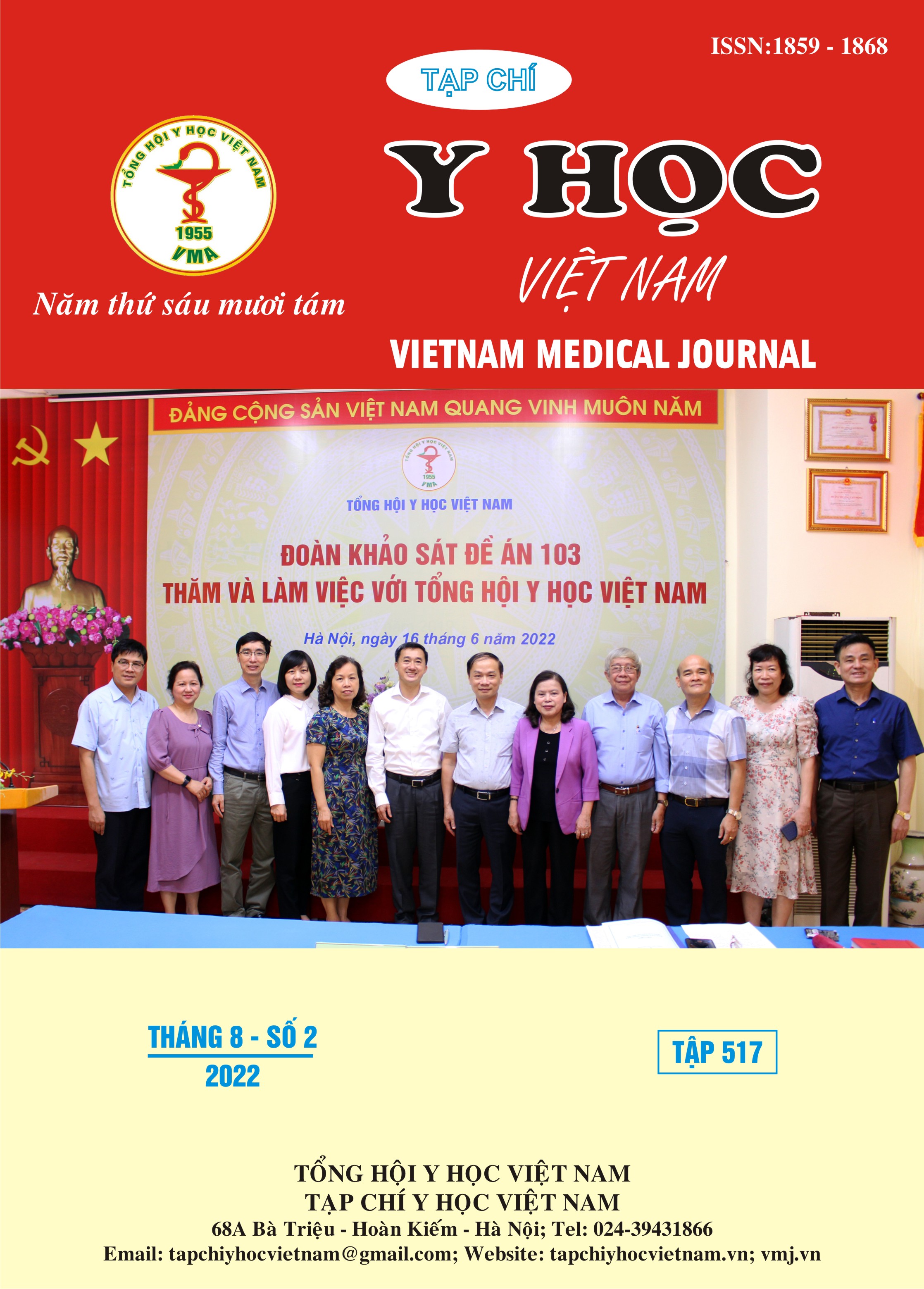CLINICAL AND SUBCLINICAL CHARACTERISTICS IN CHILDREN WITH THALASSEMIA AT QUANG NGAI HOSPITAL FOR WOMEN AND CHILDREN
Main Article Content
Abstract
Background: Thalassemia belongs to the group of congenital hemolytic diseases, monogenic inheritance, and recessive character. Hemoglobin electrophoresis helps in the diagnosis of this disease. This technique has been put into operation at Quang Ngai Hospital for Children and Women since January 2021, helping in the diagnosis and treatment of Thalassemia in their home province as well as reducing the difficulty in monitoring and medical treatment cost for patients. There hasn’t been a study on Thalassemia in Quang Ngai yet. We study to evaluate the clinical and subclinical characteristics of children with Thalassemia. Objective: To describe some clinical and subclinical characteristics according to disease form in children with Thalassemia at Quang Ngai Hospital for Women and Children. Method: A descriptive cross-sectional study on 64 children diagnosed with Thalassemia at Quang Ngai Hospital for Women and Children from January 2021 to September 2021. Result: Clinical characteristics: The mean age is 3.5±2.9 years, the age group from 2 to under 5 years old accounts for 46.9%. The rate of male/female is 1.46/1, its proportion in rural areas is more than in urban areas. The majority of children in the study are the Kinh, accounting for 78.1%. Among them, 20 children admitted to the hospital for check-ups account for 31.3%, 15 children with pale skin account for 23.4% and the lowest rate is diarrhea with 2 children, accounting for 3.1%. In children with skin symptoms, pale mucous membranes reach 62.5%, there is no case of dark skin and black gums. Most of the children in the study group are α-Thalassaemia hidden, accounting for 60.9%. There is no difference in the distribution of disease by gender and ethnicity, with p>0.05. Subclinical characteristics: The average Hb 9.4±1.6g/dl. The mean MCH, MCV and RDW are 20.4±2.9pg, 68±8.1fL, 17.3±0.1%, respectively. The average serum iron concentration is 12.8 ± 6.3µmol/l (min: 1.6µmol/l, max: 30.6µmol/l). The average ferritin concentration is 147.1 ± 133.5µmol/l (min: 33.2ng/dl, max: 694.6ng/dl). Electrophoresis result: In mild α-Thalassaemia, all patients have HbA over 95.2%, mean 96.9%, HbA2 under 3.5%, mean 2.4%, mean HbF is 1.1%. In HbH, the mean value of HbA is 83.4%, 1.7% HbA2 and 1.3%HbF, there is a present of HbH, with an average value of 10.7%. In b-Thalassaemia, the mean value of HbA is 85.0%, the mean value of HbA2 is 3.0% (min:1.3%, max: 6.1%), the mean value of HbF is 10.8% (min:1.5%, max: 64.2%). In b-Thalassaemia/HbE, 67.7% HbA, 3.56% HbA2, 12.3% HbF, there is a present of HbE, with an average value of 28.04%. Conclusion: Thalassemia is a congenital hemolytic disease with autosomal recessive inheritance. The percentage of Vietnamese people carrying the Thalassemia gene is high. The disease has a variety of clinical manifestations, from no clinical symptoms to severe clinical symptoms, such as anemia, hepatosplenomegaly, bone deformities, etc. Hemoglobin electrophoresis test contributes to the diagnosis. diagnose thalassemia. The proportion of Thalassemia gene is high. This disease has diverse clinical symptoms, from no clinical symptoms to severe clinical symptoms, such as anemia. Hemoglobin electrophoresis contributes to the diagnosis of Thalassemia.
Article Details
Keywords
Thalassemia, Congenital hemolytic disease, Hemoglobin Electrophoresis, Quang Ngai Hospital for Women and Children
References
2. Trần Thị Hương (2018), “Nghiên cứu nồng độ kẽm huyết thanh ở bệnh nhi Thalassemia điều trị tại trung tâm Nhi khoa Bệnh viện Trung Ương Huế”, Tạp chí Y Dược học -Trường Đại học Y Dược Huế, 4(3), tr.97- 108.
3. Nguyễn Minh Tuấn (2020), “Thalassemia”, Phác đồ điều trị Nhi khoa Bệnh viện Nhi Đồng 1, tr.831-837.
4. Phan Hùng Việt (2016), “Nghiên cứu đặc điểm lâm sàng và xét nghiệm bệnh Thalassemia ở trẻ em tại khoa nhi Bệnh viện Trung Ương Huế”, Tạp chí Y Dược học - Trường Đại học Y Dược Huế, 6(5), tr.104- 110.
5. Bùi Văn Viện (2015), “Nghiên cứu thực trạng bệnh Thalassemia ở Bệnh viện trẻ em Hải Phòng”, Tạp chí Y học thực hành, 2 (4), tr.12-19.
6. Nguyễn Thị Yến (2019), “Phân loại Thalassemia ở trẻ em tại bệnh viện Nhi Trung Ương”, Tạp chí Nhi khoa, 12(4), tr.58- 63.
7. John O, Cornelis L, Harteveld J, et al (2012), “Chapter 2 Haematological Methods Prevention of thalassemia and other haemoglobin disorders”, Thalassemia Reports, 2, pp.16-31.
8. Nam Nguyen Hoang (2015), “Thalassemia in Vietnam”, Annuals of Translational Medicine, 2 (3), pp.14-18.


